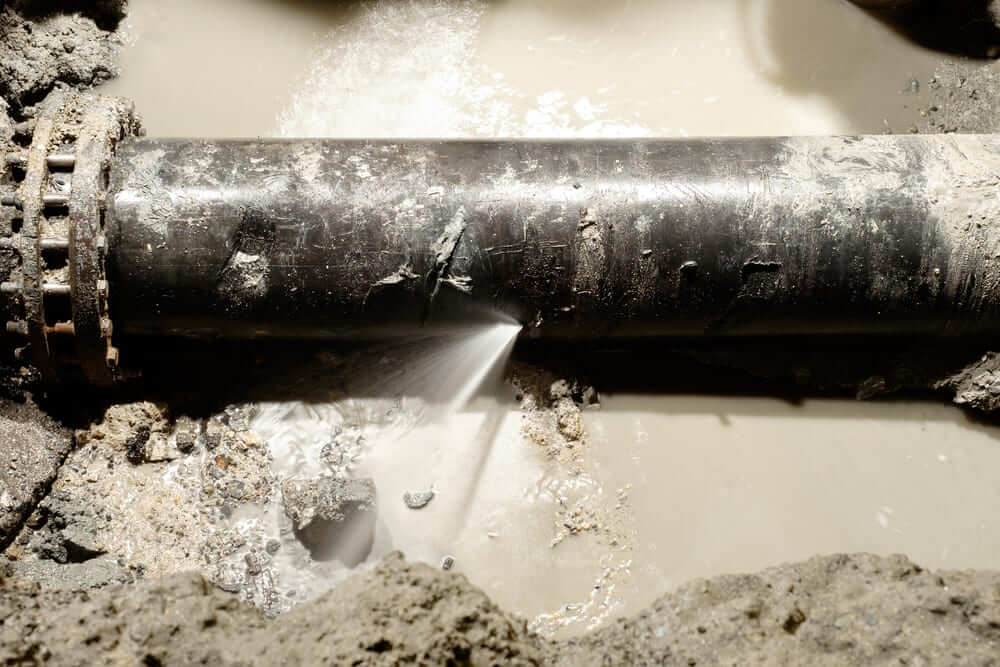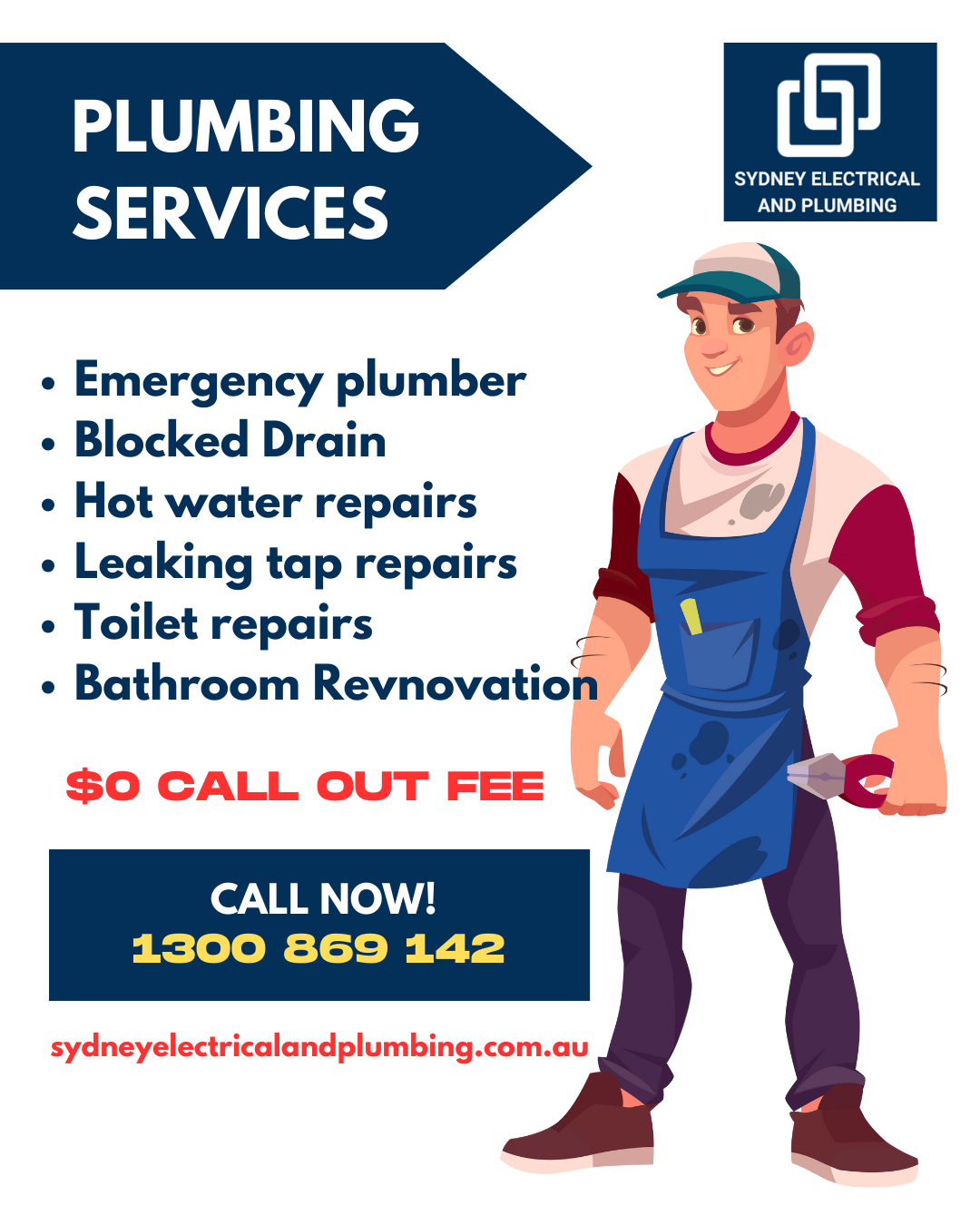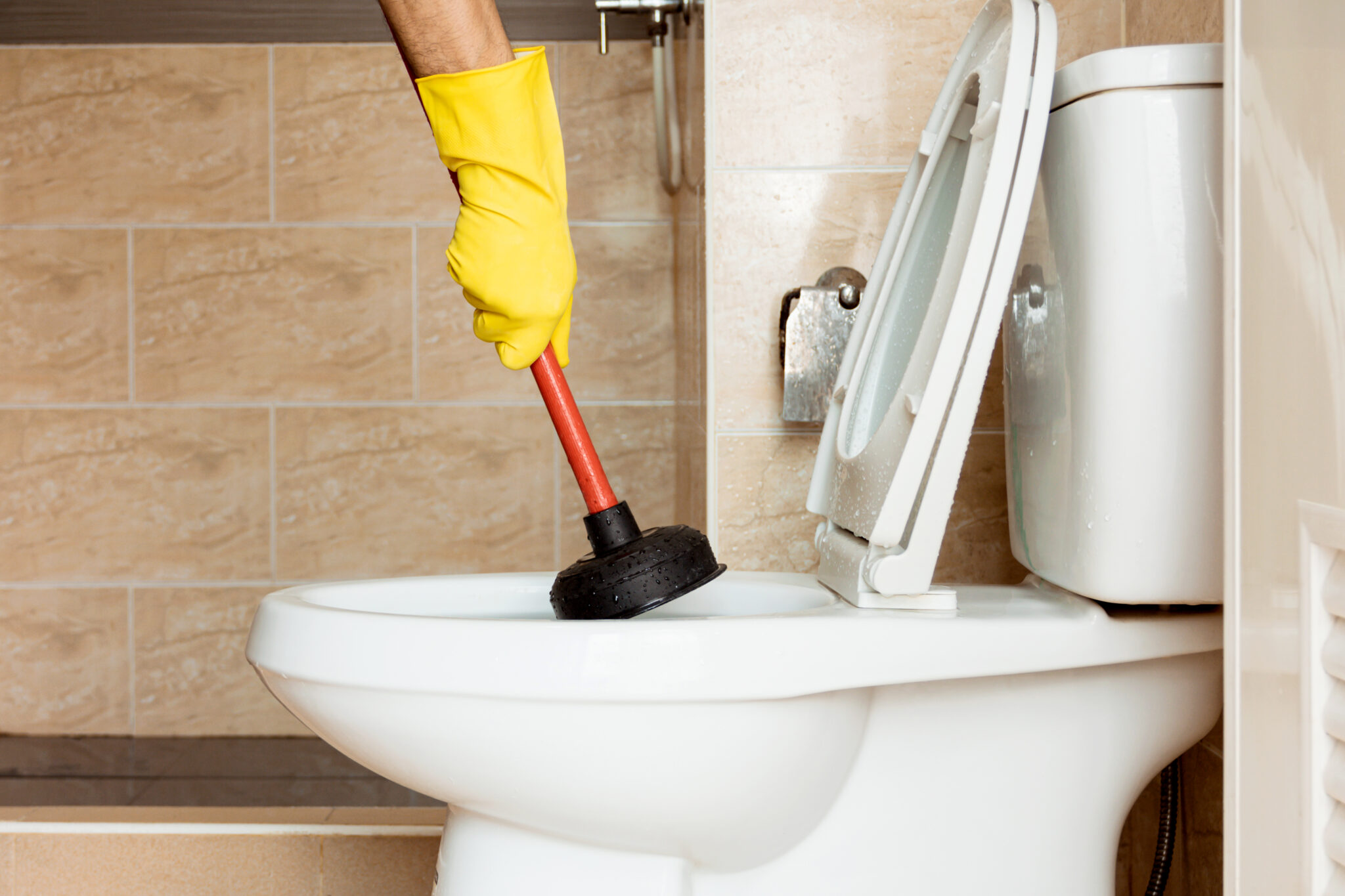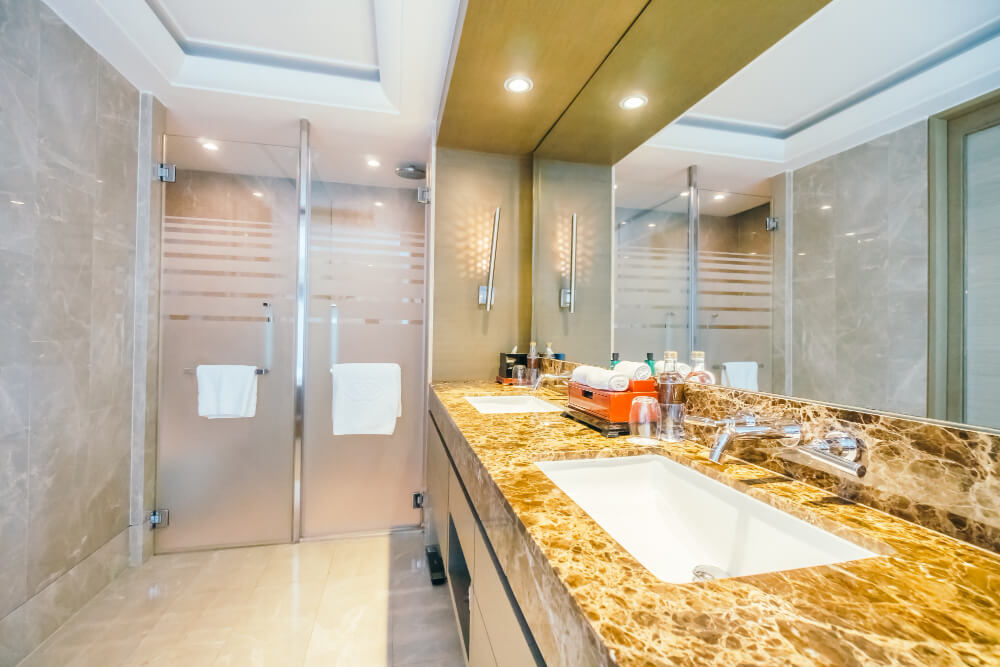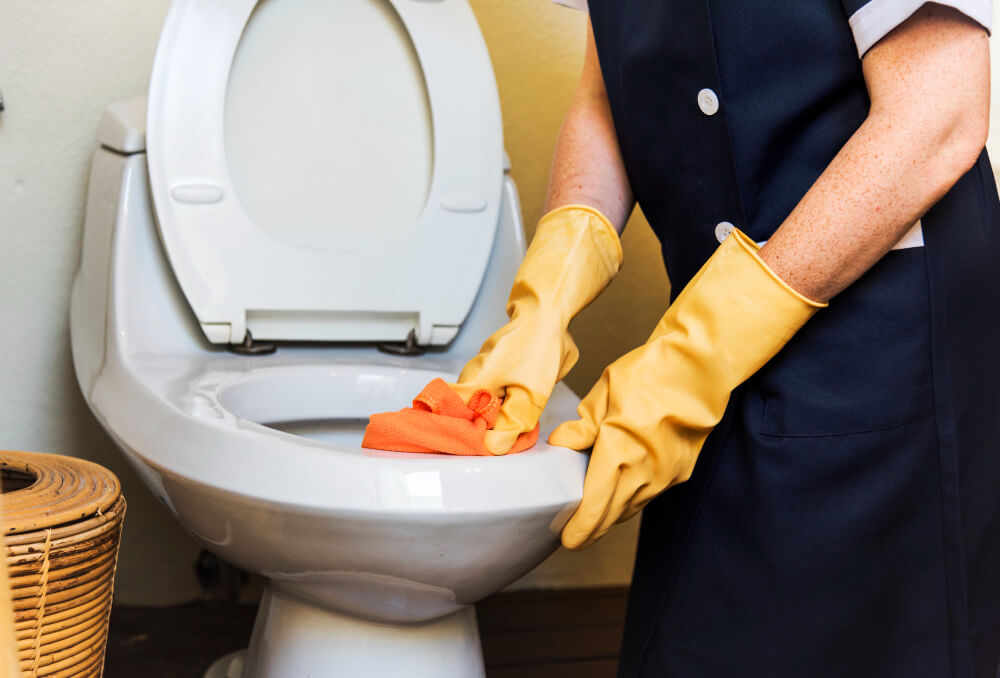One of the most frequent plumbing crises that homeowners encounter is a busted pipe. If left untreated, it can occur without warning and result in serious water damage and expensive water bills. There are a number of causes of burst pipes, including high water pressure, broken pipes, freezing temperatures, and aging-related wear and strain. Fortunately, you have some options for reducing the harm that a burst pipe might inflict. In order to empower you to confidently manage any plumbing emergency at home, we’ll go over a step-by-step procedure for fixing burst pipes in this DIY burst pipe emergency repair guide. With a few simple tools and the right guidance, you can attempt a DIY emergency repair that could save you time, money, and hassle.
Table of Contents
Here are the steps to follow for a DIY emergency burst pipe repair:
Materials required and Safety Precautions
Water leaks, burst water pipes, and broken pipes are among the most frequent problems that affect homes and businesses. When handling such situations, it’s critical to take safety procedures to limit the risk of injury and stop any more damage. You will need a few items in order to successfully repair an emergency burst pipe or burst water line. These consist of a bucket, a pipe wrench, sandpaper, epoxy putty, hose repair kit, pipe clamp, and pipe cutter or hacksaw.
Identify the location of the burst pipe
For emergency repairs, locating a burst or leaking pipe is essential. Turning off the main water supply is the first step. Next, look for any signs of damage or leaks in the visible pipes. To pinpoint the precise location of the issue if the source is not immediately apparent, you might need to utilize a leak detection programme or speak with a licensed plumber. It is possible to stop additional damage and possible water loss by taking prompt action to locate and fix the problem.
Turn off the main water supply
After locating the ruptured pipe, cut off the primary water supply to your home or structure. Usually, the water meter is situated outside the home next to the street. To fully close the valve, turn the handle in a clockwise direction. This will halt the water’s flow and stop additional harm.
Drain the water from the affected area
After that, empty the impacted area of water. To release any leftover water, turn on all of the faucets, hot and cold, and flush all of the toilets. To remove extra water and stop more water damage, use buckets and towels.
Seal the burst pipe with a clamp
You’ll need to use a pipe clamp to seal the broken pipe. Utilizing a pipe cutter or hacksaw, trim the damaged portion of the pipe. The burst region and the cut should be separated by at least one inch. Sandpaper can be used to make the amount’s edges smooth. To form a watertight seal, place the clamp over the burst region and use a pipe wrench to tighten the screws. Putty with epoxy can be used as a temporary fix.
Please note that these steps are a general guide and may not be applicable to all situations. If you are unsure about how to fix a burst pipe, it is always best to consult with a professional plumber. Don’t worry we will discuss a detailed way to repair a burst pipe.
Read More: 7 Best Methods To Unclog A Toilet
Here, Learn A Detailed way to repair a burst pipe
For homes, emergency pipe bursts may be a nightmare since they can result in rushing water and possibly structural damage. This manual offers the information and resources needed to manage this situation skillfully. It describes the kind of burst pipes, why they happen, and what needs to be done quickly. The handbook covers long-term preventive measures, professional assistance, short-term remedies, and turning off the water supply. Your most powerful ally in times of distress is knowledge.
Understanding the Problem
Identifying a Burst Pipe: Recognizing a burst pipe is the crucial first step in addressing the issue. It often manifests as a sudden gush of water, an unexplained increase in water bills, damp spots on walls or ceilings, or even reduced water pressure. These signs demand immediate attention, signaling a potential burst or leak in the plumbing system.
Potential Causes of Burst Pipes: Understanding the root causes helps in prevention and effective solutions. Common culprits include freezing temperatures, aging pipes, increased water pressure, corrosion, and invasive tree roots. These factors weaken the pipe’s integrity, eventually leading to ruptures and leaks.
Dangers and Risks Associated: Beyond the inconvenience of water damage, burst pipes pose various risks. They can result in structural damage, mold growth, electrical hazards, and significant financial repercussions if not addressed promptly. Moreover, stagnant water can be a breeding ground for harmful bacteria, necessitating swift action to mitigate health risks.
Initial Steps in Case of a Burst Pipe
Shutting Off the Water Supply: It is essential that you take quick action. Upon discovering a burst pipe, promptly locate the primary water shut-off valve and shut it to halt the water supply. This valve is often found adjacent to the water meter or where the main water supply enters the house. Knowing where it is ahead of time can save crucial minutes in an emergency.
Safety Precautions: Prioritize your safety above all else. It can be risky to combine electricity and water. If the burst pipe is near outlets, appliances, or wiring, proceed with extreme caution and turn off the electricity supply to the affected area from the breaker panel. Additionally, put on protective gear like gloves and waterproof boots to prevent injuries or contact with potentially dangerous water.
Assessing the Damage: Consider the situation. Once the water supply has been secured and all safety measures have been taken, ascertain the extent of the damage. Search for any places where water might have collected, wet patches on walls or ceilings, and any potentially affected furniture or belongings. In the future, having photos or a video documentation of the damage taken with a camera can assist with insurance claims.
Tools and Materials Needed
Essential Tools for Repair
- Pipe Cutter or Hacksaw: Used to remove the damaged section of the pipe.
- Adjustable Pipe Wrench: Essential for gripping and turning pipes.
- Torch or Heat Gun: Required for soldering copper pipes or thawing frozen pipes.
- Pipe Repair Clamps or Sleeves: Ideal for temporarily sealing burst pipes.
- Plumber’s Tape and Compound: Used for sealing pipe joints and connections.
- Epoxy Putty or Pipe Repair Kit: Effective for quick temporary fixes.
Materials Required for Temporary Fixes
- Rubber or Neoprene Patches: Useful for wrapping and sealing small pipe ruptures.
- Pipe Wrap Tape or Self-Fusing Silicone Tape: Provides temporary sealing for larger pipe bursts.
- Rubber Couplings: Helpful for joining pipes temporarily.
- Galvanized Sheet Metal: Useful for creating a temporary patch for larger ruptures.
- Bucket or Container: To catch excess water from the burst pipe.
Additional Considerations – Make sure these resources and instruments are accessible and available in advance. Store them somewhere easy to get to so you can respond quickly to crises. Additionally, become acquainted with their use via tutorials or instruction guides so that you may utilize them in a burst pipe situation.
It is essential to have these supplies and instruments on hand in order to handle a burst pipe quickly. Their prompt availability can have a big impact on how well the situation is handled and how much water damage is prevented until a long-term remedy is put in place.
Read More: How to renovate a bathroom
Temporary Repairs
Patching or Wrapping the Pipe
- Rubber Patches: For small leaks or punctures, apply rubber patches over the affected area, ensuring a tight seal.
- Pipe Wrap Tape or Self-Fusing Silicone Tape: For larger ruptures, wrap the damaged section tightly with the tape, starting a few inches away from the burst and extending several inches beyond it.
Using Repair Clamps or Sleeves
- Positioning the Clamp or Sleeve: Place the repair clamp or sleeve over the burst section, ensuring it covers the damaged area adequately.
- Tightening Securely: Use the necessary tools to tighten the clamp or sleeve securely, creating a temporary seal until permanent repairs can be made.
Application of Epoxy Putty
- Preparing and Applying Epoxy Putty: Follow the manufacturer’s instructions to mix and apply the epoxy putty over the burst area. Ensure thorough coverage for a secure temporary fix.
- Allowing Time for Setting: Allow the putty to set and cure as per the recommended duration before restoring water flow through the repaired pipe.
Cautionary Note – Temporary fixes are intended to stop the water flow and stop more harm from happening until a permanent solution is put in place. They work, but they are not permanent fixes. As soon as possible, it is essential to obtain professional assistance to address the underlying problem and perform lasting repairs.
By containing the issue and reducing water damage, using these temporary repair methods can buy you some much-needed time until a qualified plumber can apply a long-term fix. Recall that these are only temporary solutions, and that getting expert assistance is still necessary for a long-term solution.
Contacting Professionals
When to Seek Professional Help
- Extent of Damage: If the burst pipe has caused extensive damage or if multiple pipes have ruptured, it’s advisable to seek professional assistance immediately.
- Inability to Control the Leak: If temporary fixes are unable to staunch the water flow or if the burst is in a challenging location, contacting a plumber becomes imperative.
- Lack of Expertise: If you’re unfamiliar with plumbing or uncomfortable making repairs, it’s safer and more prudent to enlist the expertise of a qualified plumber.
How to Choose a Qualified Plumber
- Certifications and Licenses: Ensure the plumber holds proper licenses and certifications. This validates their expertise and adherence to industry standards.
- Experience and Reputation: Seek referrals or read reviews to gauge the plumber’s experience and reputation in handling emergency situations like burst pipes.
- Promptness and Availability: Opt for plumbers known for their prompt response times and availability, especially during emergencies.
Communicating with the Professional
- Describing the Situation: Clearly explain the situation, detailing the location of the burst, any temporary repairs attempted, and the extent of water damage.
- Asking for Estimates: Request a detailed estimate for the repair work, including costs and the expected timeline for completion.
- Confirming Availability: Ensure the plumber’s availability aligns with the urgency of the situation. If needed, inquire about emergency service options.
It is essential to seek the advice of a licensed plumber in order to treat the underlying problem that caused the pipe to burst and carry out long-lasting repairs. A prompt resolution is ensured by timely and informed communication with the professional, so minimizing additional damage and annoyance.
Read More: How to Unblock a Sewage Drain with Effective Techniques (2023 Guide)
Long-Term Solutions
Repairing or Replacing the Pipe
- Assessment by Professionals: Engage a plumber to assess the extent of damage and recommend repair or replacement options based on the pipe’s condition.
- Pipe Repair or Replacement: Depending on the severity of damage and the pipe’s material, the plumber may suggest repairing the affected section or replacing the entire pipe.
Preventive Measures to Avoid Future Bursts
- Insulation and Heating: Insulate pipes in vulnerable areas to prevent freezing during cold spells. Use heat tape or cable to provide additional warmth in susceptible locations.
- Routine Maintenance: Schedule regular inspections by a qualified plumber to identify potential issues before they escalate. Addressing minor concerns proactively can prevent major bursts.
- Pressure Regulation: Install a pressure regulator if high water pressure is a recurring issue. Excessive pressure can strain pipes, leading to bursts over time.
Regular Maintenance Tips
- Checking for Leaks: Periodically inspect pipes for leaks, corrosion, or signs of wear. Address any issues promptly to prevent potential bursts.
- Drainage Maintenance: Ensure proper drainage to prevent water accumulation and pressure buildup in the pipes.
- Updating Aging Pipes: Consider replacing aging pipes or sections that show signs of deterioration to prevent future bursts.
Implementing long-term solutions involves a proactive approach to prevent future burst pipes. By repairing or replacing damaged pipes and adopting preventive maintenance measures, homeowners can significantly reduce the risk of experiencing a similar emergency in the future.
Dealing with Water Damage
Drying Out Affected Areas
- Removing Standing Water: Use a wet/dry vacuum or towels to remove excess water from affected areas promptly.
- Maximizing Ventilation: Open windows and doors to enhance air circulation and aid in drying out damp spaces. Utilize fans and dehumidifiers to expedite the drying process.
- Removing Damaged Items: Remove furniture, carpets, and belongings affected by water to prevent further damage and mold growth.
Mold Prevention and Cleanup
- Thorough Cleaning: Clean and disinfect surfaces exposed to water to prevent mold growth. Use a mixture of water and mild detergent to scrub affected areas.
- Drying Out Completely: Ensure all surfaces, including walls, floors, and ceilings, are thoroughly dried to prevent mold formation. Use a moisture meter to confirm dryness.
- Professional Assistance: For extensive water damage or suspected mold infestations, seek professional assistance. Mold remediation experts can assess and address the situation effectively.
Seeking Assistance for Extensive Damage
- Contacting Insurance: Notify your insurance company about the water damage and document the affected areas with photographs or videos.
- Consulting Professionals: If the water damage is extensive or poses safety risks, seek assistance from water damage restoration specialists. They have the expertise and equipment to handle severe situations.
Mitigating future damage from water damage necessitates quick action. To restore afflicted areas, immediate drying, thorough cleaning, and mold prevention are essential. Getting expert help guarantees a thorough resolution, particularly when there has been significant harm.
Conclusion
In a case involving a burst pipe, prompt response is critical. This manual provides householders with the necessary information, ranging from short-term fixes to long-term ones. Important first measures include locating a burst pipe, turning off the water supply, and using temporary remedies. For a successful resolution, getting expert help, carrying out long-lasting repairs, and taking quick action to handle water damage are essential. Recall that preventing future emergencies requires foresight, routine maintenance, and readiness. With the knowledge in this book, homeowners can confidently handle situations involving burst pipes, reducing damage and guaranteeing a safe, well-maintained plumbing system.
What are some common causes of burst pipes?
Some common causes of burst pipes include freezing temperatures, high water pressure, fractured pipes, and aging-related wear and tear. Freezing temperatures are the primary cause of pipe breaks during the winter. Water in the water pipe expands and freezes when the temperature drops below freezing, producing pressure that can reach 25,000 to 120,000 psi. High water pressure inside pipes can still lead to bursts in warm weather. Another common cause of burst pipes is blockage, which can happen when you pour grease down the sink or flush too many toilet paper rolls.
How can I prevent pipes from bursting?
It’s critical to install pipe heating cables, seal gaps and cracks, disconnect hoses in freezing weather, insulate exposed pipes, maintain proper drainage, keep the house warm enough, and schedule regular plumbing inspections in order to prevent pipe bursts. By taking these precautions, you can keep your home’s temperature steady, avoid pressure building, and stop pipes from freezing and expanding. In order to prevent pipe breaks, potential problems can be found early on with regular maintenance.
What should I do if my pipe bursts in the middle of winter?
Turn off the water supply, open a tap, empty the system, soak up extra water, contact a licenced plumber and take safety measures to avoid damaging a damaged pipe. To release pressure in the pipes, turn off the water supply, open a tap and empty the system. To prevent more damage, use buckets and towels to absorb extra water. When handling ruptured pipes, always remember to exercise caution to reduce the possibility of damage.

